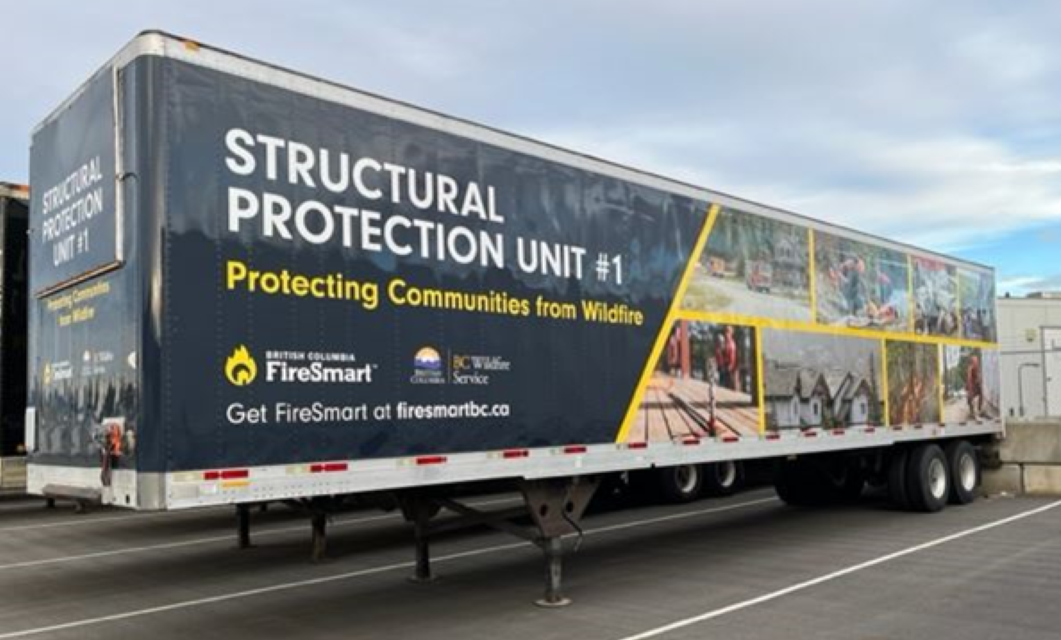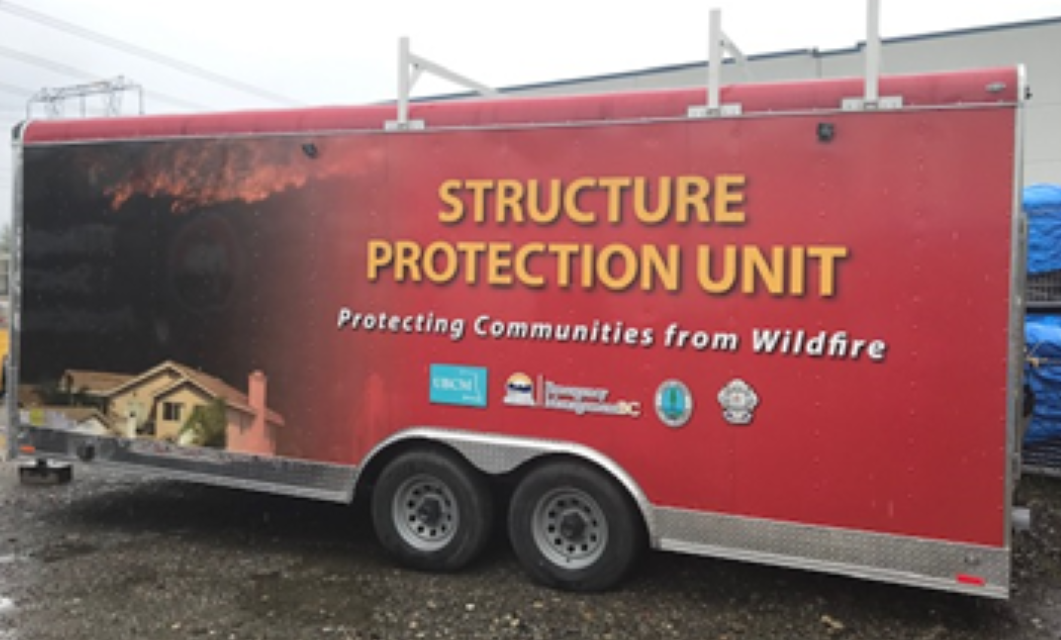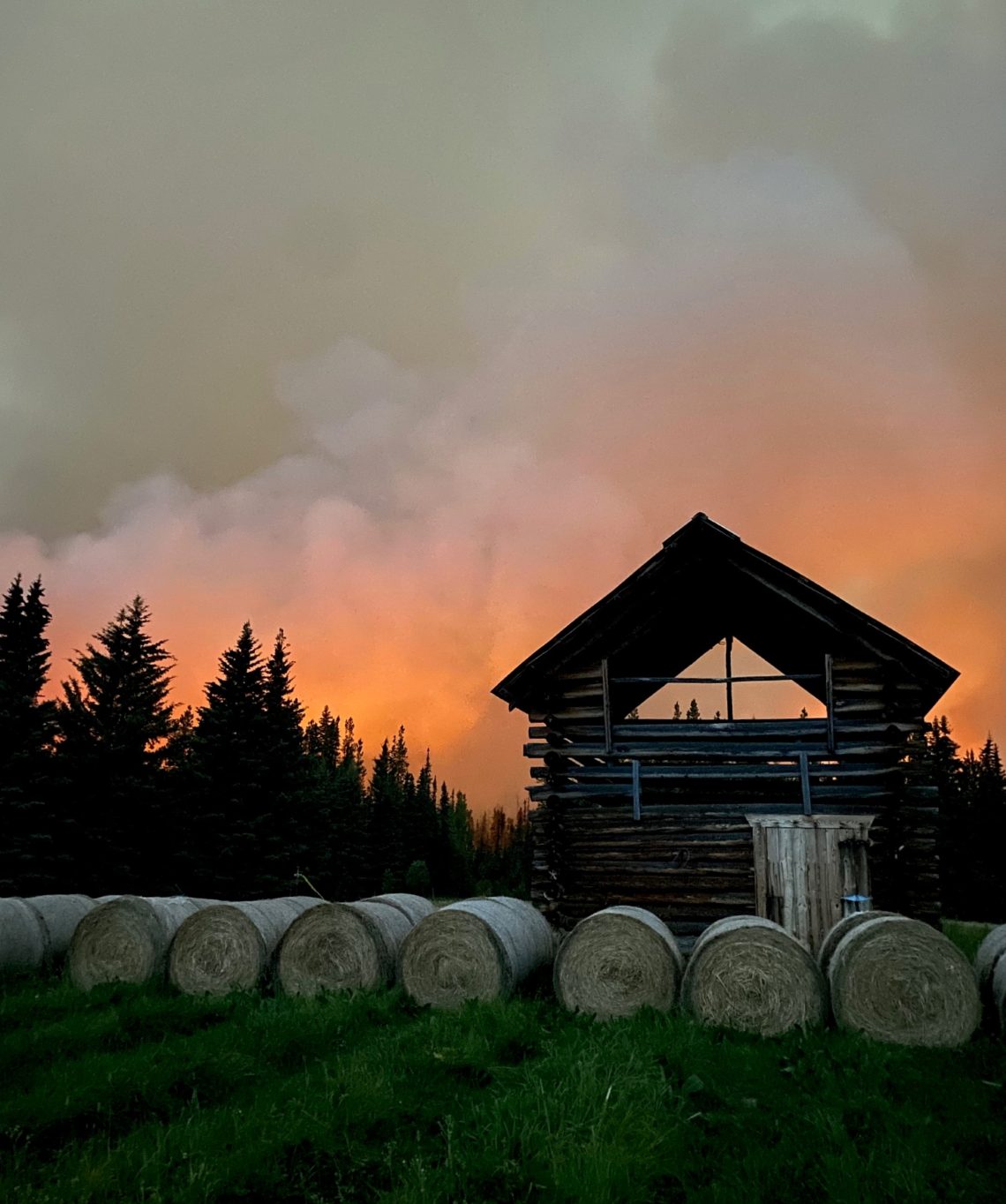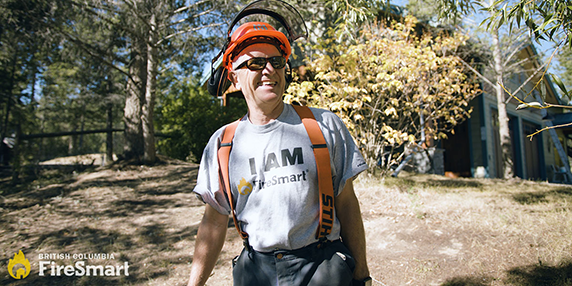Structure Protection and Structure Defence
Wildland firefighters are not trained or equipped to respond to structures, so they work with structural firefighters and specially trained contractors who are trained to protect and defend areas in the Wildland Urban Interface (WUI) and intermix.
Learn more about what you can do to increase the resiliency of your home and property from wildfire. A quick reference brochure on Structure Protection and FireSmart can be found here.
Structure Protection Specialists
BC Wildfire Service mobilizes and deploys Structure Protection Specialists (SPS) when wildfires may impact or threaten a community. Structure Protection Specialists have the training and experience to manage the necessary equipment and specially trained personnel to protect and defend properties threatened by wildfire through various measures.
- Plan and oversee structure defence tactics and activities
- Carry out mitigation and action plans using structural protection techniques and equipment
- Conduct FireSmart activities
- Identify critical priority objectives
Structure Protection Units
Structure Protection Units (SPU) are trailers used by structure protection crews and deployed SPS across the province. They contain pertinent equipment such as pumps, hoses, sprinklers and water delivery attachments for structure protection and defence. There are two types of SPU. Type 1 SPU hold a large amount of equipment, enough to defend approximately 125 structures. Type 2 SPU are owned by BC Wildfire Service, contractors and fire departments and are equipped to protect approximately 35 structures.
The BC Wildfire Service owns and operates 10 of the Type 1 SPU and three Type 2 SPU that are strategically placed throughout the province. During wildfire season, the BC Wildfire Service also has access to more than 40 Type 2 SPU trailers through contractors and local fire departments.
 Type 1 SPU
Type 1 SPU
 Type 2 SPU
Type 2 SPU
Structure Protection and Defence Tactics
A variety of tactics are used when defending properties and infrastructure from a wildfire. A commonly used tactic is creating a "humidity bubble" around the structure using strategically placed sprinklers. This approach seeks to raise the relative humidity around the structure, reducing the likelihood of embers and burning debris igniting combustible materials on or near a structure. Structure defence tactics employ the use of fire engines, water tenders and other fire department assets configured as task forces or strike teams to protect homes and infrastructure once the wildfire threat is imminent.
Selecting effective protection and defence tactics depends on fire behaviour and the property or infrastructure requiring protection. Residents can increase the defensibility of their home by implementing FireSmart practices on their property.

Frequently asked questions
Why can’t BC Wildfire Service wildland firefighters attend building or vehicle fires?
The BC Wildfire Service is mandated to fight wildfires, which predominantly consists of burning trees and other vegetation. Wildland firefighters are not trained nor equipped to respond to fires involving non-organic materials. These structural fires produce hazards including noxious smoke that crews cannot attend to safely.
What does the BC Wildfire Service do when wildfire threatens a structure?
When a wildfire threatens a structure, BC Wildfire Service deploys a structure protection specialist (SPS) to assess the situation and order specialized structure protection and/or structure defence resources as necessary. These resources can include fire engines, tenders, Type 1 and 2 structure protection units (SPU) and structure suppression crews (SPC).
How does the BC Wildfire Service decide when and where to deploy structure protection resources?
A structure protection coordination officer (SPCO) oversees triaging structure protection resource requests from across the province. The SPCO supports BC Wildfire Service Incident Commanders and Incident Management Teams by mobilizing and deploying resources. These decisions at the SPCO are supported by the SPS personnel deployed to the incidents where structure protection equipment and personnel will be deployed to assess several factors. Some of these factors include fire behaviour, availability of resources and whether there is a threat to human life and property.
Where are structure protection units (SPU) based at the start of wildfire season?
All of the BCWS Type 1 SPU initially begin the season staged at the provincial equipment depot located in Chilliwack. The Type 2 SPU are located across the province with contractors and fire departments. When the fire season begins, the BC Wildfire Service strategically positions the Type 1 SPU throughout the province in areas most at risk or threatened by wildfire.
Why might structure protection be removed from a property after it was deployed there?
Structure protection equipment and personnel may be repositioned if there is a higher risk to human life or property elsewhere. Other influential factors include fire behaviour and availability of resources.
What’s the difference between BC Wildfire Service structure protection and other fire departments?
Structure protection is a program embedded within the BC Wildfire Service that strategically organizes structure protection response within the province when critical infrastructure and residences are threatened by wildfire. Fire departments provide the structure protection apparatus (i.e. engines, tenders, units and other equipment) as well as specialized personnel that are trained and equipped to respond to structure fires resulting from wildfire.
With a few simple steps you can contribute to increasing your property, neighbourhood and community resiliency to wildfire. Learn more.
Each year, updated information packages are sent to all municipal and regional fire departments in B.C. asking for expressions of interest to participate in the structure protection program. Learn more about how to get involved.

